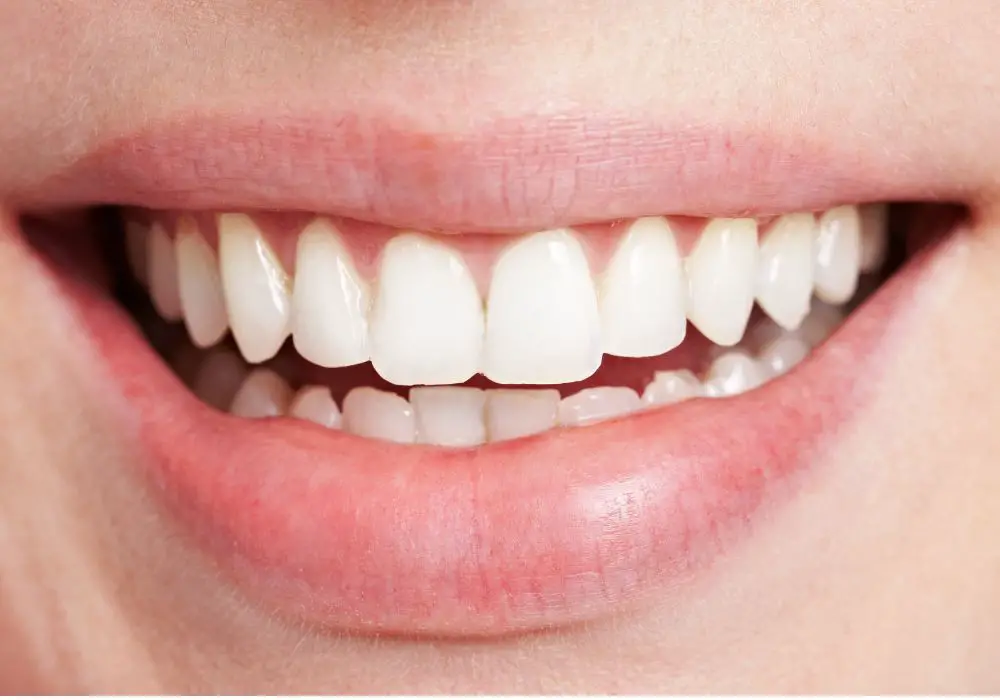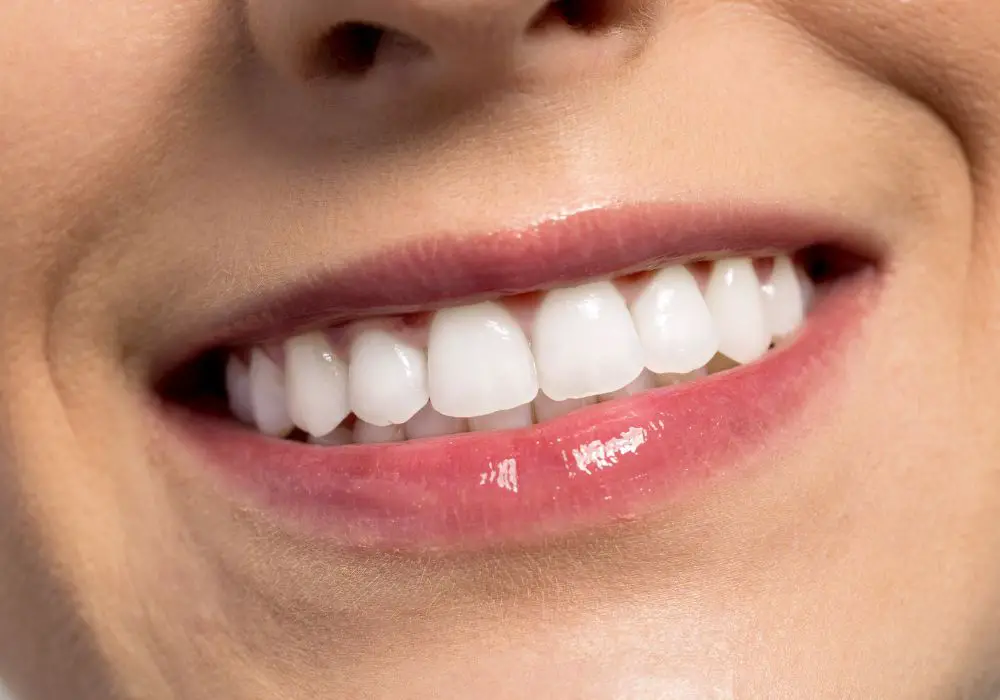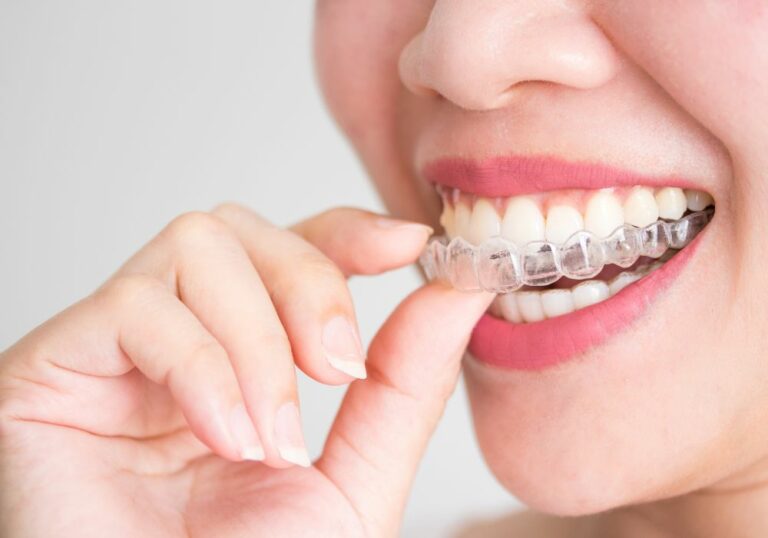Tooth enamel is the hard, outer layer of your teeth that helps protect them from decay and damage. Once enamel wears away, it can’t grow back. But there are things you can do to help strengthen and rebuild your tooth enamel naturally. This in-depth article explores the structure of enamel, reasons it breaks down, signs of enamel loss, and most importantly, natural ways to promote enamel remineralization.
What is tooth enamel made of?
Enamel is the visible part of your tooth made up of millions of microscopic mineral crystals packed together. It contains:
- Calcium: The main mineral in enamel making up 36% of its structure. Calcium provides density and strength.
- Phosphate: The second most abundant mineral at 17% of enamel. Phosphate gives enamel its hardness.
- Hydroxyapatite: This calcium phosphate mineral makes up 95% of enamel’s crystalline structure. It contributes to enamel’s rigidity.
- Protein: Enamel contains 2-5% protein, mainly amelogenin proteins that guide enamel formation.
- Water: Enamel is 4% water, which allows diffusion of mineral ions.
- Trace minerals: Enamel contains small amounts of magnesium, sodium, potassium, chloride, carbonate and fluoride ions.
This unique mineral composition gives enamel its extraordinary hardness and durability. It’s the hardest substance in the human body.
Enamel structure and formation
Enamel is made up of thousands of slender rods or prisms extending from the tooth’s inner dentin layer up through the surface. Each enamel rod:
- Has a keyhole-like shape in cross section
- Runs parallel to each other
- Is bound together by an interrod enamel substance
Enamel formation begins even before the tooth erupts. Enamel-producing cells called ameloblasts lay down the enamel layer. Here are the stages of development:
- Matrix deposition stage: Ameloblasts secrete a protein matrix that mineral ions later fill in.
- Mineralization stage: The matrix hardens as calcium and phosphate crystallites precipitate out.
- Maturation stage: Mineral crystals grow thicker while water and protein get removed.
By the time the tooth erupts, the enamel has reached full thickness and maturity. Adult teeth have about 2.5mm of enamel covering the crown portion. Enamel is thickest at the chewing surfaces and thinnest near the gum line.
Key functions of dental enamel
This unique mineralized structure equips enamel to perform many crucial protective duties:
- Withstands force: The enamel layer can withstand tremendous biting and chewing forces without fracturing.
- Prevents wear: Enamel’s ultra-hard surface resists abrasion from chewing gritty foods.
- Insulates temperature: Enamel keeps hot and cold temperatures from stimulating the tooth’s inner nerve.
- Blocks bacteria: Enamel is impervious to oral bacteria trying to penetrate and infect the tooth.
- Resists acid: Regular assaults from acidic foods only dissolve enamel slightly, though accumulated damage takes a toll.
- Maintains appearance: Enamel’s smooth, glossy surface gives teeth their nice white aesthetic.
Enamel plays a critical role in protecting the rest of the tooth from disease and damage. But unlike other tissues in the body, enamel can’t heal or regenerate itself once it’s lost. That’s why preventing enamel breakdown is so important.
What causes enamel to wear away?

While tooth enamel is extremely hard and durable, it’s not indestructible. Certain factors can gradually erode and thin the enamel layer over many years:
- Bacterial acids: Oral bacteria metabolize sugars and carbs to produce enamel-demineralizing acids. Frequent acid attacks decalcify and decay enamel.
- Food acids: Frequent exposure to acidic foods like citrus fruits, vinegar, soft drinks and wine wears away enamel over time.
- Stomach acids: Acid reflux or recurrent vomiting brings corrosive stomach acid into contact with teeth. This acid dissolves enamel.
- Abrasion: Vigorous brushing, especially with coarse toothpaste, erodes enamel over time. So can excessive flossing.
- Attrition: Chronic grinding or clenching abrades down enamel, especially on chewing surfaces. The normal chewing motion also slowly wears down enamel.
- Tooth defects: Enamel anomalies from birth or childhood trauma lead to weak spots prone to fracture and chipping.
- Whitening agents: Certain peroxide bleaching agents used too frequently or improperly weaken enamel.
- Age: As you get older, enamel becomes more brittle and susceptible to cracking and flaking.
- Genetics: Some people naturally have softer, thinner enamel more prone to rapid wear.
Daily enamel wear is normal, but excessive destruction leads to severe enamel loss. Once that hardened outer barrier is breached, the rest of the tooth is much more vulnerable.
Signs your tooth enamel is disappearing
Watch for these warning signs that your enamel may be disappearing:
- Tooth sensitivity – This is one of the first tip-offs that enamel is thinning. As enamel erodes, dentin underneath gets exposed and teeth become painfully sensitive. Hot, cold, sweet, sour or air trigger sensation.
- Translucent teeth – Enamel gives teeth their solid white appearance. As it wears away, teeth start to look more see-through near the edges and biting surfaces.
- Discoloration and staining – With less enamel to protect the dentin, teeth yellow and dark stains become more noticeable.
- Visible cracks – Advanced enamel loss reveals cracks and grooves extending across teeth. The cracks appear brownish.
- Exposed dentin – Extreme enamel loss overexposes the yellowish dentin underneath. Teeth appear ragged.
- Increased cavities – More frequent cavities form as enamel isn’t there to protect against decay. New cavities may occur around existing fillings.
- Irregular texture – Enamel erosion makes tooth surfaces feel rough, gritty and uneven instead of smooth.
Don’t ignore these enamel loss warning signs. See your dentist right away to assess the damage before it escalates further. The goal is to prevent total enamel destruction.
Can you regrow lost tooth enamel?
Unlike other tissues in your body, enamel can’t spontaneously regenerate or heal itself once destroyed. That’s because enamel-producing cells called ameloblasts are lost after teeth erupt.
Restorative dental treatments like fillings, inlays, crowns and veneers can cosmetically replace lost enamel. But the original organic enamel won’t regrow.
However, it is possible to reharden and regenerate minerals in enamel that’s been weakened but not completely lost. This “remineralization” process may reverse early decay and strengthen enamel to prevent future breakdown.
How to remineralize enamel naturally?

The key to remineralization is providing your enamel with minerals like calcium, phosphate, fluoride and magnesium. This helps rebuild the hydroxyapatite crystals that give enamel its durability.
Here are the top natural sources of enamel-fortifying minerals:
Calcium-rich foods
Calcium makes up over 1/3 of enamel. Consuming calcium-rich foods helps supply the raw material for recalcifying enamel. Good dietary sources include:
- Milk, cheese and yogurt
- Broccoli
- Okra
- Almonds
- Salmon
- Beans
- Collard greens
- Rhubarb
- Oranges
Dairy foods contain the most easily absorbed calcium. Opt for low-fat versions and eat them several times per week.
Phosphorus-containing foods
Phosphate ions are the second most abundant mineral in enamel. Make sure to get enough phosphorus from your diet for enamel remineralization. Foods high in phosphorus include:
- Meat, poultry, fish
- Eggs
- Nuts
- Seeds
- Whole grains
- Dairy foods
- Garbanzo beans
- Lentils
Phosphorus often naturally accompanies protein. Include phosphorus providers at meals for enhanced enamel health.
Fluoride
Fluoride plays a special role in enamel health. It transforms hydroxyapatite into fluorapatite, which is even more resistant to acid attacks and decay. Fluoride sources include:
- Fluoridated water
- Fluoride toothpaste
- Fluoride mouthwash
- Fluoride dental treatments
- Fluoride supplements
Use a fluoride toothpaste once or twice daily to strengthen enamel. Also drink fluoridated water if available in your area.
Magnesium-containing foods
Magnesium helps transport calcium and phosphate into enamel for remineralization. Leafy greens, nuts, seeds, legumes, whole grains and milk provide magnesium.
Xylitol
Xylitol is a natural sugar alcohol that inhibits the bacteria responsible for enamel demineralization and decay. Consume xylitol-sweetened gum, mints, snacks or beverages.
Green tea
Green tea is rich in polyphenols and catechins that combat bacteria and boost enamel remineralization.
Other natural approaches to improve enamel
Along with a mineral-rich diet, these additional natural strategies can help enhance enamel remineralization:
- Aloe vera: Contains minerals and fights bacteria. Use aloe-based tooth gels.
- Probiotics: Beneficial oral bacteria produce alkali to neutralize cavity-causing acids. Eat probiotic yogurt.
- Omega-3s: Anti-inflammatory fats found in salmon and nuts reduce decay.
- Licorice root: Contains antimicrobial compounds that may protect enamel.
- Shiitake mushrooms: Contain antimicrobial lentinan to inhibit harmful oral bacteria.
- Strawberries: Provide malic acid to dissolve plaque and whiten teeth.
Tips to prevent enamel erosion

Practicing good daily oral hygiene and habits can help slow the rate of enamel destruction:
- Brush gently with a soft bristle brush and fluoride toothpaste to avoid abrasion
- Avoid brushing right after consuming acidic foods and drinks when enamel is softened
- Rinse mouth with plain water after exposure to acids
- Chew xylitol gum to stimulate protective saliva flow
- Drink water throughout the day to help neutralize acids
- Limit frequency of acidic foods and sugary drinks
- Don’t overuse teeth whitening products containing peroxide
- Reduce grinding, clenching and hard chewing on hard foods, ice or bones
- See your dentist every 6 months to detect early enamel issues
Common questions about enamel remineralization
Should I take calcium supplements for my enamel?
Calcium supplements alone aren’t the complete solution for enamel health. Enamel needs a balance of minerals like calcium, phosphate, fluoride and others. Focus first on getting these minerals from a healthy diet before considering supplements.
Can chipped enamel remineralize?
Small chips and cracks may partially fill in and smooth over through remineralization. But large fractures and defects require composite fillings or dental crowns to restore structure and appearance. Protect remaining enamel to prevent fractures from worsening.
Do enamel strengthening toothpastes work?
Toothpastes containing ingredients like stannous fluoride, arginine, and hydroxyapatite promote slight remineralization by depositing extra calcium and phosphate. But their effects are relatively minor compared to fluoride. Using a fluoride toothpaste and getting minerals from your diet is most effective.
Why is my enamel still dissolving with fluoride?
Fluoride helps strengthen enamel but can’t make it totally impervious to destruction. Factors like dental erosion, gum disease, acidic foods, grinding, genetics and age may still gradually thin enamel over time, even with diligent fluoride use and good oral hygiene. Sticking with recommended brushing and dental visits is still worthwhile to slow enamel loss.
Can I rebuild enamel after whitening?
Whitening strips, gels, rinses and trays that contain peroxide can weaken enamel over time with repeated use. Cut back on whitening treatments and focus on remineralizing. Use enamel-safe products containing calcium, xylitol or fluoride. A dental fluoride treatment can also help. Avoid further whitening until enamel is stronger.
Conclusion
Protecting your natural tooth enamel against rapid destruction is absolutely essential for keeping your teeth healthy and cavity-free. While you can’t regrow enamel completely once lost, natural remineralization can strengthen and even partially replace minerals leached away by early decay. Make enamel-friendly dietary choices, practice prevention habits, and see your dentist regularly for the best chance of keeping your enamel intact for decades to come.







